There’s not a lot of information out there about planning bike tours and cycling holidays in Romania. That’s why we were delighted when Ionut from Bike in Time offered to help write this article.
Ionut is Romanian and lives near Bucharest. He has been a cycle guide in Romania since 2007 and set up Bike in Time in 2019, offering bike tours throughout Romania.
In this article Ionut answers our questions about why you’d want to pick Romania for a cycling holiday, where to go depending on the kind of cycling you’re looking for, how long you need and the best times to visit.
We hope it helps you plan your own bike tour in Transylvania and the rest of Romania. Enjoy!
Why go on a Romania bike tour?
When cyclists come to Romania they tell me that it “feels like we travelled back in time”. Indeed, that’s the inspiration for my business name, Bike in Time! Romania is a fascinating country which still preserves some very old traditions; you can find untouched natural landscapes, beech forests, lakes, medieval towns and Saxon villages, not to mention iconic Gothic, Baroque and Romanesque castles, like Bran Castle (AKA Dracula Castle) and Peles Castle.
People are friendly and happy to host travellers. We Romanians pride ourselves on being warm, friendly and hospitable.
Over the years, the historical regions of Romania have been part of the Ottoman and Hungarian Empires and these influences are seen in the architecture, language and food. Slow tourism and responsible tourism are popular currently, and we are a great destination for this type of travel.
Finally, for those that love gravel cycling, in the last two years the new gravel cycling trend made Romania a paradise for gravel cycling tourism, as approximately 50% of the country’s road network is still unpaved.
Come and visit for yourself!
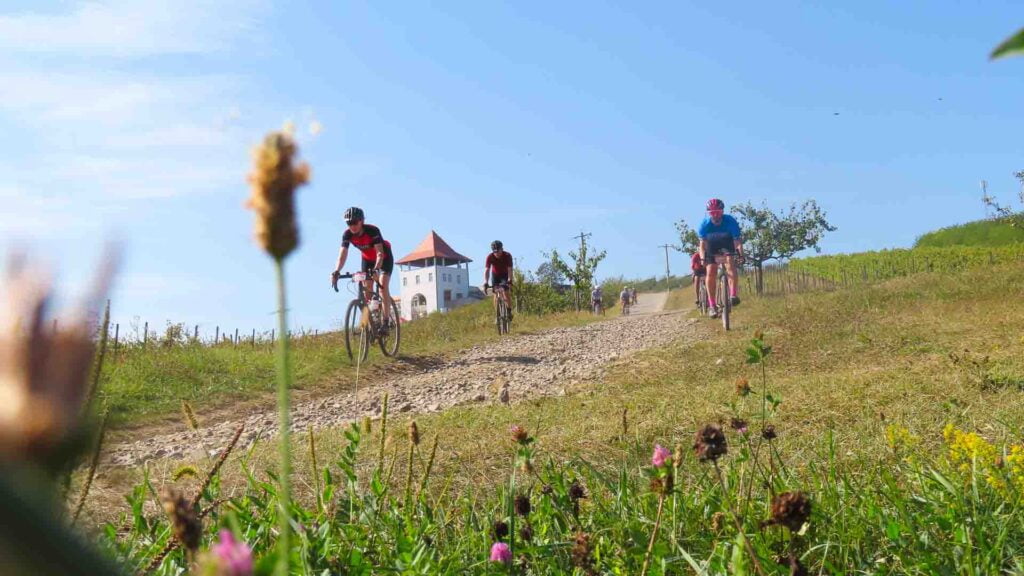
Gravel cycling in Romania
Sponsor Message
Want help organising your Romania cycling holiday?
Bike in Time have been planning bike tours in Romania since 2007 and would love to help plan yours.
Head over to Bike in Time's website to start crafting your perfect Romania cycling trip.
Exclusive offer: use the code below and get 10% discount on any services that you book direct with Bike in Time before 16 January 2026.
What are the best areas of Romania for a cycling holiday?
Romania’s geography offers a wide range of cycling options for all fitness levels, from family and recreational cycling to very long and adventurous trips through the wilderness of Romania.
You can find very good asphalt roads, but also gravel and forestry roads, including single track trail routes. If you are looking for themed holidays, the country also offers some wonderful choices including mixing cycling with wine tours, cultural/historical tours along the UNESCO World Heritage sites or along the Danube, bike and boat tours and more.
Here are some of my favourites:
Cycling in Bucharest
Bucharest is the capital of Romania and the most important city of the country.
Visiting the bustling city centre by bicycle is the best way to see it, as the city is flat, too big for walking visits and too crowded for driving.
Just around the city, a network of paved and gravel roads is well-suited to long rides, with short stops to take in a few historical sites.
Two of our tours are in this area:
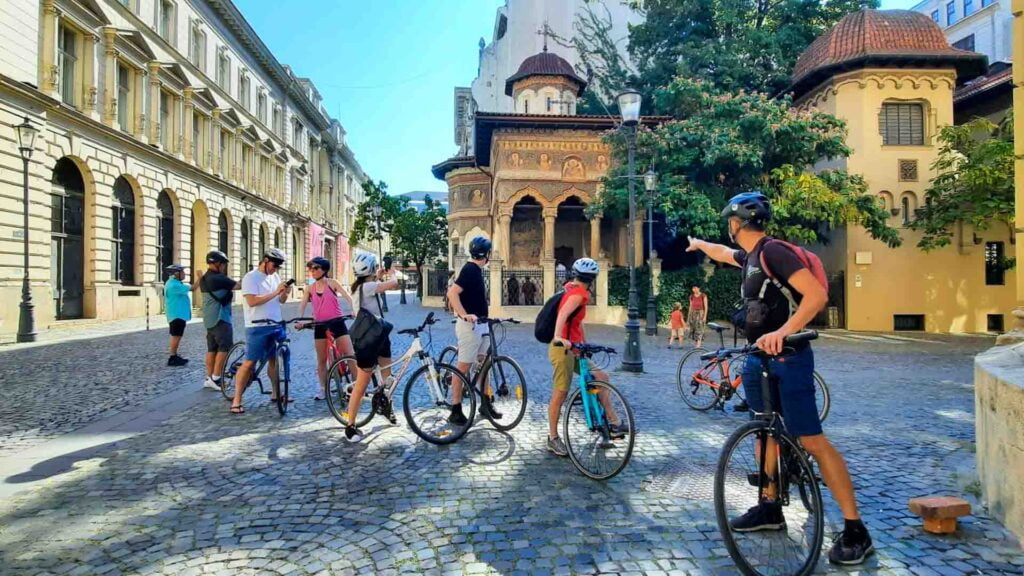
On a Bucharest cycling tour
Cycling the Dealu Mare region – wine region close to Bucharest
Not far from Bucharest (about one hour’s drive towards the mountains) is our best red wine region. It has roughly the same latitude and same altitude as Bordeaux and Tuscany. The Dealu Mare region is a hill which separates the Carpathian Mountains and the Romanian Plain.
It is suitable for riders who love short, steep climbs, as well as for wine lovers. Unexpected, beautiful views can be seen from here, and the wine is great.
Combining cycling or hiking with wine tasting seems to be very popular.
Our dedicated wine trips in the region are:
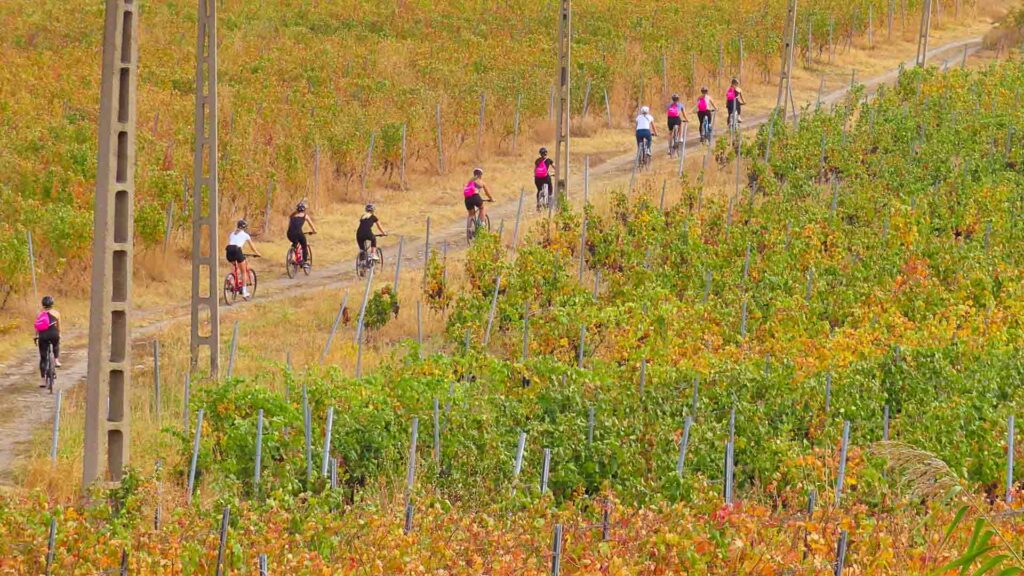
Cycling in Romania’s wine region
Cycling Romania’s epic climbs
Romania’s mountains offer awesome conditions for both road bike trips and gravel trips in Romania.
The Transfagarasan and Transalpina roads are favourites with cyclists and are the most popular routes crossing the Carpathians, both of them at +2,000m altitude.
Our dedicated road bike tour includes both climbs in one tour.
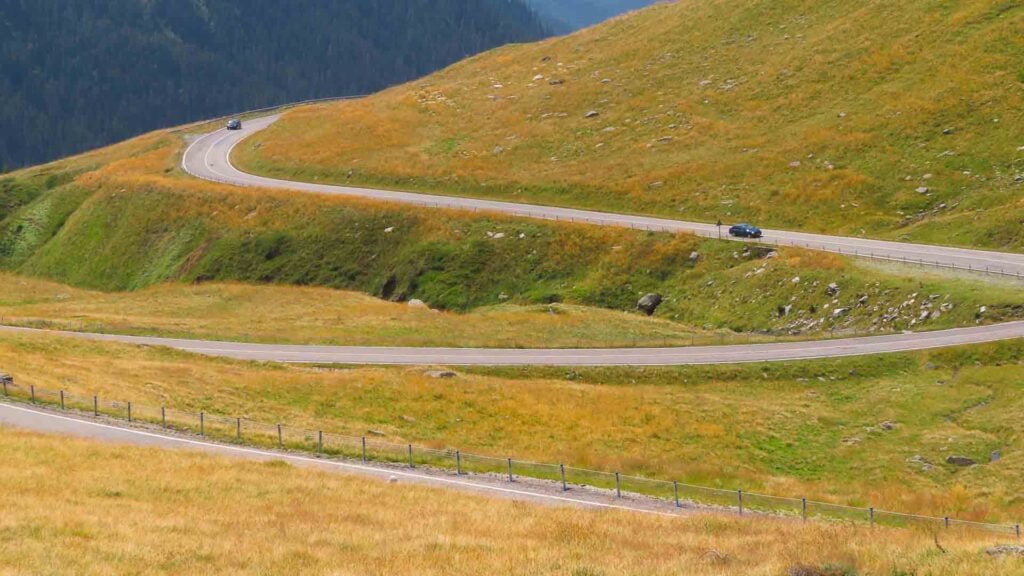
A switchback on the Transalpina Pass
Other places to consider for cycling in Romania
Transylvania
Cycling in Transylvania, including cities such as Brasov, Sighisoara, and Sibiu, is very popular due to the level of services for cyclists. Here, places to stay tend to be much more prepared to welcome cyclists, as you can see on the map of Velo Popas certification 2. The cycling routes are marked by local initiatives and there are more cyclists than in other regions, so drivers tend to be more aware about their presence on the road.
Dobrogea and Danube Delta
These regions are also favourites with cyclists due the EuroVelo 6 route and the fact there is a lot of good wine to be found. Here you can combine cycling with boating and birdwatching in the Danube Delta – one of the wildest reserves in Europe.
Bucovina and Maramures
These regions are popular due to their UNESCO World Heritage sites (painted monasteries in Bucovina and ancient churches made of wood in Maramures). If you are looking to combine cycling with cultural/traditional experiences, these two regions are a great choice.
Sponsor Message
Want help organising your Romania cycling holiday?
Bike in Time have been planning bike tours in Romania since 2007 and would love to help plan yours.
Head over to Bike in Time's website to start crafting your perfect Romania cycling trip.
Exclusive offer: use the code below and get 10% discount on any services that you book direct with Bike in Time before 16 January 2026.
How long do you recommend for a Romania cycling tour?
Romania is one of the largest countries in Europe, so a weekend trip is not enough to see very much of the country.
We usually recommend an extended trip (10-12 days) for travellers coming to Romania from a long distance, and multiple short weekend or week-long trips for cyclists living in Europe. Many of our travellers return to Romania again and again to experience more regions.
If you can only visit Romania once, we recommend choosing two (maximum three) regions and going on a customised cycling trip.
- For example, you can visit Bucharest, the Saxon Transylvania, and the Danube Delta.
- Another option is to combine Maramures with Bucovina for a more cultural visit.
- Or, should you prefer a more demanding tour, you can climb the main climbs of the Carpathian Mountains: Transfagarasan and Transalpina.
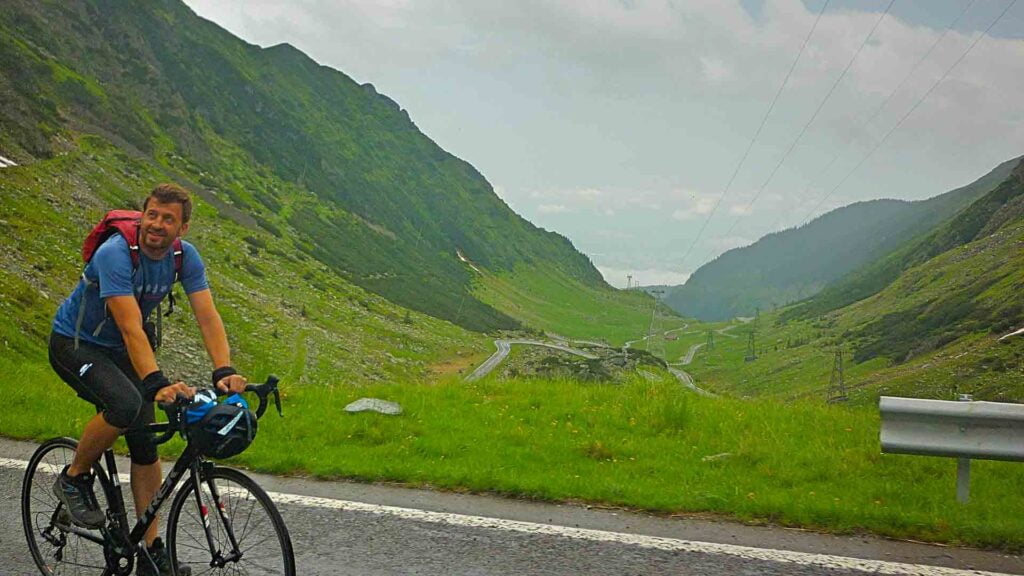
Cycling tour up the Transfagarasan Pass in Romania
Tell us your dream itinerary for a road cycling holiday in Romania?
I personally enjoy long rides, including long climbs or crossing from one historical region to another. But I also want to visit the locals, eat local, and visit new sites. As you know, my travel agency name is “Bike in Time”, so I am often looking for lost in time experiences. Which I find a lot in Romania!
One of the best experiences for including all the above is a cycling tour in Transylvania, crossing the Carpathian Mountains. On each side there is a historical site, which includes a lot of significant meaning for my country. Whether you start from Curtea de Arges, from Sibiu, or from Horezu, each site is a historical and cultural city. The ride across the mountain range includes all types of vegetation, and the wildlife is always present along the route (yes, including bears – more on those here).
You’ll find beautiful landscapes with mountain views, but also local food, and then the traditional villages at the base of the mountains. Also make time to include a short break for a swim in the freezing mountain lakes; you’ll find them refreshing!
For meals and accommodation, I prefer to experience the traditional guesthouses in small beautiful villages, where you can interact with the locals. But there is always good quality accommodation in the big cities, where you can add cultural experiences to your journey.
This itinerary gives you an excellent sense of what Romania is all about.
Here is a link to our tour that covers the above experience.
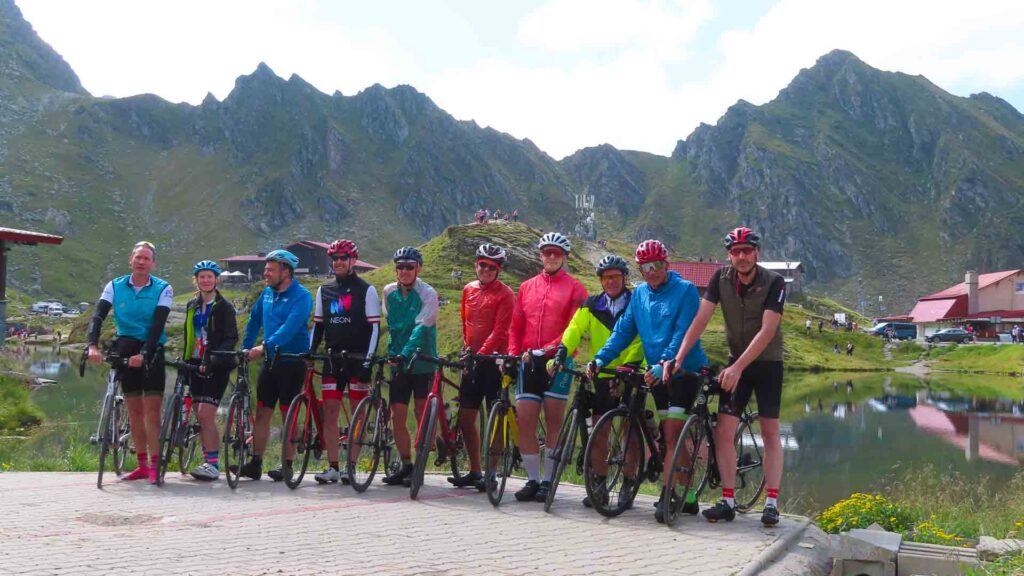
On a Transylvania cycling tour
Tell us your dream itinerary for a gravel cycling holiday in Romania?
With approximately 50% of the road network still unpaved, Romania is a paradise for gravel riders. It’s almost true that for each paved road you can find a gravel option, so there’s a lot of gravel to enjoy!
The gravel routes I choose are mainly through our beautiful forests and along rivers, linking more cultural cities.
Again, staying and eating with locals would be a plus for the whole experience.
For our Romania gravel tours, we include all types of accommodation, from traditional guesthouses and former parish houses transformed into comfortable hotels, to 4* hotels in the main cities.
Here is our Transylvanian bike tour route on gravel.
Tell us your dream itinerary for a leisure or city cycling holiday in Romania?
We run a popular cycling holiday that combines a Bucharest tour by bicycle with a wine tour in the Dealu Mare region.
The Bucharest day tour shares the dramatic history and culture of this complicated city in just 3-4 hours.
Then, for a second day, we can take one hour out of Bucharest (by car) to a quiet winery area, very similar to Tuscany or to Bordeaux (same latitude, same altitude, same geography). Most of our visitors find this area completely unexpected and beautiful. Here in Dealu Mare (The Big Hill) you can find about 40 wineries, so you can find at least one or two for visiting and having a well-deserved wine tasting.
The cycling tour through the region can be on asphalt, or on gravel. There are a lot of roads, and most of the wineries are happy for cyclists to use their agricultural roads.
At the end of the day, you can return to Bucharest, or you can spend one night at a winery and to have another ride the next day.
- Here is the Bucharest sightseeing tour.
- Here is the wine tour.
Sponsor Message
Want help organising your Romania cycling holiday?
Bike in Time have been planning bike tours in Romania since 2007 and would love to help plan yours.
Head over to Bike in Time's website to start crafting your perfect Romania cycling trip.
Exclusive offer: use the code below and get 10% discount on any services that you book direct with Bike in Time before 16 January 2026.
What are the best times of year to visit Romania?
Cycling in Romania is possible throughout the year. However, if you’re coming on holiday, you obviously want to try and pair the destination with the weather conditions.
General climate
The climate is continental-temperate with warm summers and cool winters. Annual average temperatures vary between +8 C in the north and +12C in the south. In Transylvania the temperature can reach +30 C in summer and -25 C in winter.
Be ready for the climate differences for even in summer you need warmer clothes, and an umbrella is also necessary, especially in the mountain areas.
Mountain areas have a distinct climate and weather may change rapidly, so that from a sunny summer morning one can have a rainy afternoon.
Spring
Early spring is very suitable for trips in the south of the country, for example the Danube Delta, the wineries of Dealu Mare, and Bucharest.
Statistically, May and June are the months with the highest level of precipitation, but it is not very cold, so you can visit Transylvania, the wineries, and again the Danube Delta.
Summer
The summer is very warm in the south, so try to avoid Bucharest and the south/east of the country. Instead, this is a great time to visit Transylvania, Maramures, Bucovina, and the mountains.
Autumn and winter
Autumn is a great time for outdoor lovers in Romania. Any region of Romania should be fine between late September until late October, though bear in mind that the temperatures in the mountains begin to fall rapidly as the year progresses. The autumn colours on the trees become quite spectacular in October.
Late autumn and winter are again suitable for the southern part of the country, but it’s often windy, which is not ideal for cyclists.

Riding on the road in Romania
Is Romania safe for cyclists to visit?
Cycling conditions in Romania are similar to other European countries. Still, there are some things that are better, and some others that are not as good. Here are some tips:
Travel advice
Romania’s level of criminality is currently very low, though as ever, it’s a good idea to check current travel information before you book and travel. For UK visitors, the UK government travel information pages for Romania are here.
The positive trend of the economy and the EU membership made the country much safer than in the 1990s. However, for a pleasant experience, I’d suggest getting in touch with a cycling tourism company, no matter if you are organising a self-guided trip or you are booking a dedicated guide.
You should also read and follow Romania’s highway code.
Riding
Where roads are paved, the surfaces are generally in good condition and not very crowded, but they are marked only for drivers. Cycling is not yet that popular, so unfortunately some drivers may not be very careful with cyclists.
As a general rule, for overtaking cyclists, cars must cross the centre of the road with at least half of the car. The suggested distance for overtaking cyclists is 1.5m. However, you should expect most of the drivers not to obey these rules.
By contrast, the forestry/gravel/agricultural roads are quite safe: drivers are very slow on unpaved roads, the roads are usually wide and not too broken. Still, a cycling guide or GPS for orienteering is needed, as the trails are not marked for cycling.
There are more tips on drivers and picking routes, below.
Navigation
This might be the biggest issue when you are cycling in Romania. As mentioned, roads are not signed for cycling, and touristic sites are not indicated.
Even with a GPS, you can spend a lot of time getting lost and not being able to find a particular accommodation, restaurant, or tourist site! For this reason, many cyclists find that a good cycling guide is a sensible luxury as we can save you a lot of time trying to find the best routes and save you a lot of time!
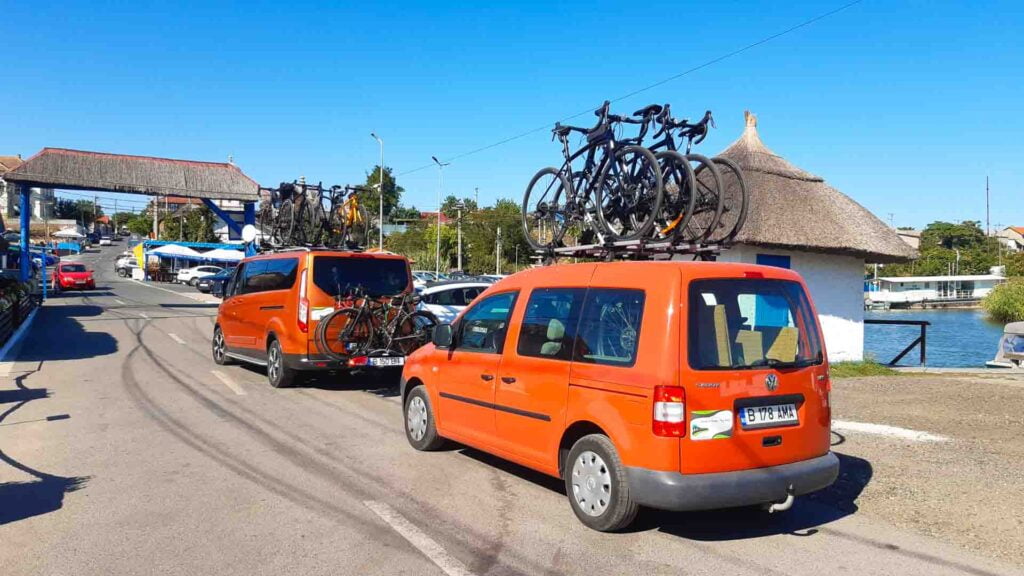
Support vehicles can help take away some of the potential stresses from a cycling holiday in Romania
Do you need an organised cycling tour of Romania?
As a cycling tour agency, of course I would suggest that supported trips are the best option for cyclists visiting Romania!
However, here are a few suggestions pro and cons, but also what to consider when you made you decision:
Benefits of Romania cycling tours
Our guests love the time saving our tours offer. Cycling routes are not marked for cyclists, the touristic sites are often not marked at all, and finding the place you’re looking for might take valuable time of your holiday. Having a guide avoids this.
A good guide/travel agency will indicate you the cycling friendly spots, so you avoid bad surprises.
In case of technical issues with your bikes or with your equipment, a guide will indicate the closest and the most suitable solution. This is also true in the case of incidents or health problems.
You are more comfortable, and you can do longer daily cycling distances with an assistance vehicle.
We introduce you to the local life, connect with the locals and with local events.
What to consider when you book travel services
As cycling is becoming more and more popular, unfortunately there are unauthorised and unlicensed service providers ready to offer their services.
Always search for licensed mountain guides and for licensed travel agencies. Checking if a travel agency is authorised is quite easy, as each of them have to publish their licence on the website. Also, an updated list of authorised travel agencies can be found on the website of the Tourism Ministry.
We strongly recommend to book mountain guides, which is the highest level of guiding in Romania. National and local guides are licences for guiding in the city or bus groups.
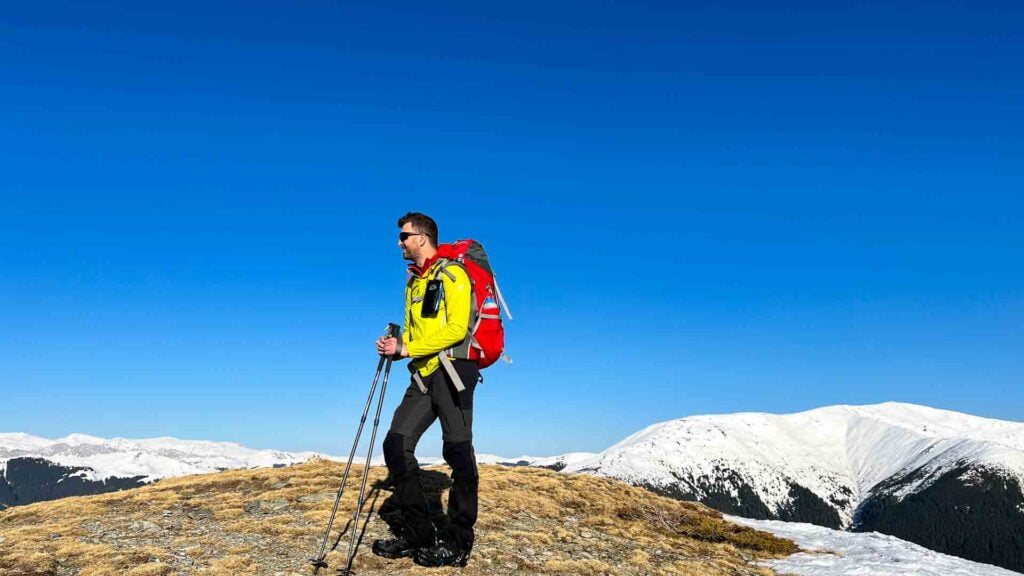
Sponsor Message
Want help organising your Romania cycling holiday?
Bike in Time have been planning bike tours in Romania since 2007 and would love to help plan yours.
Head over to Bike in Time's website to start crafting your perfect Romania cycling trip.
Exclusive offer: use the code below and get 10% discount on any services that you book direct with Bike in Time before 16 January 2026.
Tell us more about your Romania cycling tours. What do you offer?
“Bike in Time” is a Romanian tour agency focusing on cycling tourism in the historical regions of Romania. Our standard trips can be found on our dedicated website www.bikeintime.com, and more events can be found on our Facebook page.
All our tours can be customised, but just to be easier for our travellers, we separate our tours on more categories: duration, destination, fitness level, culture and history, gastronomy and wine, gravel, and road.
Levels
You can choose tours based on four level of fitness (from leisure to avid), and from 1 to 7 days. The 7 days tours are about 350 kilometres over five days of cycling.
Destinations
We divide our activity in five main destinations for cycling. In each we always seek out the quiet country roads for our guests to enjoy.
- Bucharest and surroundings
- Transylvania
- Bucovina and Moldova
- Maramures
- Danube Delta.
Each of these has dedicated cycling tours, and if you want to visit more from Romania, you can combine two or more regions in a longer bike journey.
As Romania is quite a big area to be discovered in a single trip, we suggest combining a maximum of three regions. Our recommendations:
- The northern regions of Maramures and Bucovina/Moldova, with Transylvania, are additional options if you have enough time
- Bucharest, the Danube Delta, and Transylvania.
Culture and history
Our Culture and History theme includes the UNESCO World Heritage routes, and the thematic routes, such as the wine route, or the mineral water route.
The UNESCO sites we include in our routes include the Transylvanian fortified churches, the Bucovina painted monasteries, the Maramures wooden churches, and the Danube Delta.
Gastronomy and wine
Our Gastronomy and Wine routes are more focused on the local food and wine. All our tours include food experiences, but the food and wine routes are more focused on visiting wineries and local food producers.
Gravel cycling
Our gravel tours are (mainly) off-road versions of the road and leisure tours we offer, but with more focus on gravel roads.
As Romania road infrastructure is approximately 50% unpaved, the gravel experience has the same route as our other tours, but on secondary, unpaved roads. The gravel roads we choose cross beautiful natural landscapes, and we also use forestry roads.
Recently, we created a cycling photo tour for gravel cyclists, as most of the gravel roads cross wildlife regions and natural landscapes.
Road cycling tours
Our road cycling tours are focused on the epic climbs of Romania, mainly on the Transfagarasan and Transalpina roads. Both of them cross the Carpathians from Valachia to Transylvania, two historical regions of Romania. However, these are not the only climbs, and more climbing experiences can be included in Romania.
Another road cycling route we are offering is the “Danube Route”, which is a road route along the Danube, crossing the entire country from West to East, and finishing at the Danube Delta or at the Black Sea.

Support vehicle on the Transfagarasan Pass
What are your best tips for someone’s first cycling tour in Romania?
Here are some tips for cyclists preparing for their holiday in Romania:
Cycling tours in Romania
Romania is part of the European Union so, on the whole, you can expect to obey the same rules and similar attitude of locals. However, the country is not yet totally integrated within the EU, it is emerging, so there may be a few differences.
One difference you may note is that, although cycling is becoming more popular, there is not much cycling infrastructure. This makes advance planning for a cycling tour of Romania even more important. Try to avoid the main routes (marked as European Roads or National Roads), and follow secondary routes, even they are not well paved.
If you are a gravel cyclist, Romania is likely to be a paradise for you. Gravel is almost everywhere (except the big cities), and most of the time you can get from one place to another on gravel trails.
There are cycling guides and cycling tour operators, but make sure you choose a proper company, with a tourism licence and experience as a mountain guide. Prices are still relatively low, and booking a tour agency will save lot of time and effort during your journey. More on this above.
Bike shops and bike rental shops in Romania
Bike hire is available to a certain level – do not expect to find the last carbon model of an international brand to hire, but you can find decent bikes, including e-bikes and gravel bikes. Make sure you choose the correct frame size so you are comfortable while riding.
As cycling it is not yet mainstream, bike shops and cycling friendly services are not very easy to find. Good planning is needed to avoid getting stuck as bike shops are few and far between. Again, this is something you would need to research before your trip if travelling alone.
If you need assistance on the way (luggage transfer, personal tour guide, organised visits, meals, and accommodation for cyclists), there are only a few agencies offering full services for cycling travellers. Our agency is one of them, but you can have a look for others.
If you are bikepacking, transfers by train from one point to another are probably what you’re looking for, but you have to check which trains accept bikes in the train.
Accommodation
Romania has many options for accommodation, from camping to five star hotels. However, do not expect to find luxury hotels in remote villages. Plan in advance to make sure your expectations are met.
The service level for accommodation is not always high, so be prepared. There may also not always be facilities for cyclists, so do check in advance.
In the big cities, most people are English speakers, but in the countryside, it is not always the case.
Cycling friendly accommodation is not marked – there is an ongoing project called “Velo Popas” (www.velopopas.ro), but you need to do your own research before booking your accommodation.
Food
Lots of our guests are very pleasantly surprised by the food in Romania. We have lots of rustic but delicious specialities.
Some of guests’ favourite dishes include “sarmale”, which are delicious cabbage rolls, meat ball soup, and the „papanasi” – a local dessert, including donuts, sour cream, and jam.
Until recently, it used to be hard to get vegetarian and vegan food, but most accommodation and restaurants now have dedicated menus, and the allergens should be mentioned on the menus (it is a legal obligation; but always worth double-checking before ordering).
The traditional alcoholic drink is “tuica” (tzuika), a plum (or other fruits) made spirit that is very strong!
Transfers
Public transport (trains and buses) is at an early stage of equipping for cyclists, so you have to check in advance whether your transfer accepts cycling equipment and luggage.
If you travel with us at Bike in Time, we can help with taking your bike on the train in Romania or offer private transfers.
Meeting locals in Romania
We consider Romania is one of the friendliest countries in Europe, especially in the rural areas.
However, always ask permission before taking photos with/of locals and try to behave in a friendly manner.
In the urban areas, most people speak English and French (and German in the Saxon area of Transylvania), but it is quite rare to find people who speak English in the rural areas.
Money and personal expenses
Credit cards are popular and are used in a range of shops and restaurants in the bigger cities. Usually, if they accept credit cards then that will be marked on their doors.
However, you’ll also need some local cash. You can find cash machines at the airport and banks in the towns and cities.
Romania is in the European Union but does not currently use the Euro monetary system. Payments in Romania are usually made in “LEI” (RON), which is the official currency. The exchange rate with EU, GBP and USD can be quite changeable, but it’s approximately:
- RON: EUR – 5:1
- RON: GBP – 5.8:1; and
- RON:USD – 4.8:1.
Mobile phone coverage
Mobile phone coverage in Romania is very good, especially in larger towns and cities. Obviously signal strength is often weaker in rural areas. Internet is widely available and offers some of the highest connectivity speeds in the world.
Electricity
Romania operates on 220 volt, 50 Hz electricity. Two-pin plugs are standard along with the Schuko plug.
“Bio” Romania
Territory: 237 502 sq. km. / Population – ~20 500 000
Border countries: Bulgaria 608 km, Hungary 443 km, Moldova 450 km, Serbia and Montenegro 476 km, Ukraine (north) 362 km, Ukraine (east) 169 km
Capital city: Bucharest
Ethnic groups: Romanian 89%, Hungarian 7.5%, Gipsy 1.9%, German, Other 1.6%
Religions: Christian Orthodox 87%, Roman Catholic 5%, Protestant 5%, Jewish, Muslim
Language: Romanian, a Latin language, so you can find similarities with Italian, French, and Spanish in written
Highest point: Moldoveanu 2,544 metres

Ionut from Bike in Time
Where you can cyclists find more information about Bike in Time
Ready to bike Romania? Head to our website, bikeintime.com to find all the Romania bike tours and services we offer. If you can’t find what you’re looking for, just ask me!
You can also find out more about bike tours in Romania via Epic Road Rides’ in-depth Romania guide. We also have separate guides to the Transalpina and Transfagarasan cycling routes.
A big thank you to Ionut for sharing his insights about Romania cycling holidays. We think this destination sounds like a great place for anyone seeking cycling holidays packed with cultural experiences and riding that’s a little more off the beaten track.
Sponsor Message
Want help organising your Romania cycling holiday?
Bike in Time have been planning bike tours in Romania since 2007 and would love to help plan yours.
Head over to Bike in Time's website to start crafting your perfect Romania cycling trip.
Exclusive offer: use the code below and get 10% discount on any services that you book direct with Bike in Time before 16 January 2026.
Got a question for Ionut?
Fill out this form and we will send it to Ionut. We aim to get you an answer within 24 hours where possible!First Published: 21 August 2024
This article includes details of products and/or services that we have used ourselves or which we would consider using. Some are paid features or include affiliate links or referral codes which we may earn commission from. As an Amazon Associate we earn from qualifying purchases. Please read our disclosure policy for further information.
The contents of this website are provided for general information purposes only. It is not intended to amount to advice and you should not rely on it. You should carry out your own due diligence and risk assessments and take professional advice. Views expressed by interviewees or other users of this website do not necessarily represent our views. We make no representations, warranties or guarantees, whether express or implied, that the content on our website is accurate, complete or up to date. If you use any information or content on this website, download from, or otherwise obtain content or services through our website, it is entirely at your own discretion and risk. Epic Road Rides Ltd disclaims all liability and responsibility arising from any reliance placed on the information and content on this website. Find out more here.
Sponsor Message
Want help organising your Romania cycling holiday?
We’ve been planning bike tours in Romania since 2007 and would love to help you plan yours.
Get in touch and let's discuss the best holiday for you.
Head over to our website so we can start helping you craft your perfect Romania cycling trip.


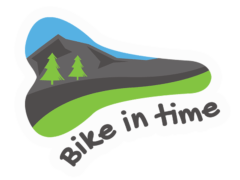
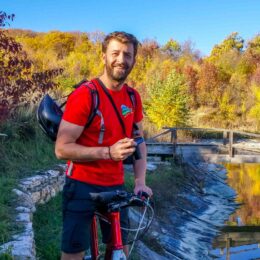

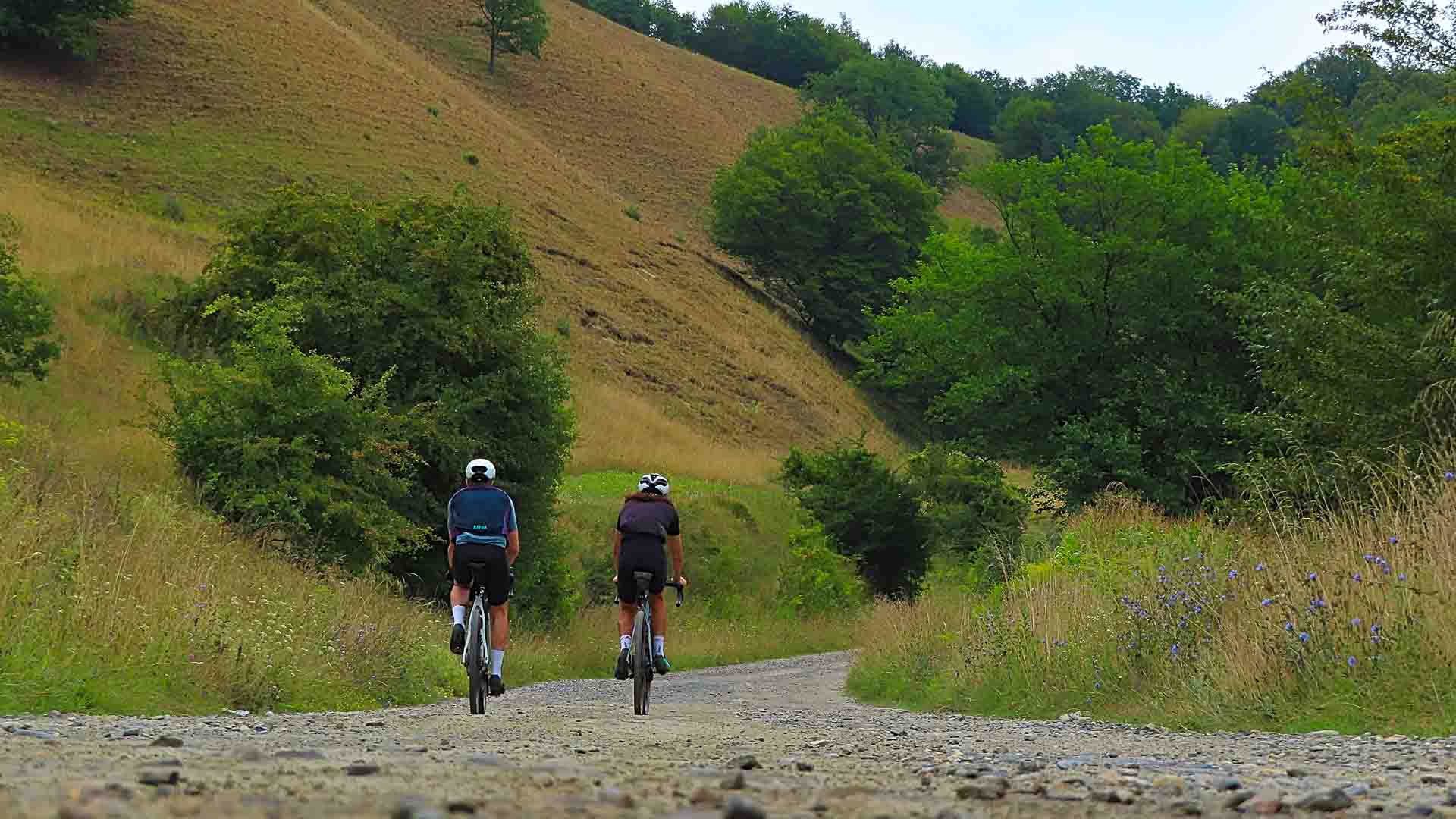
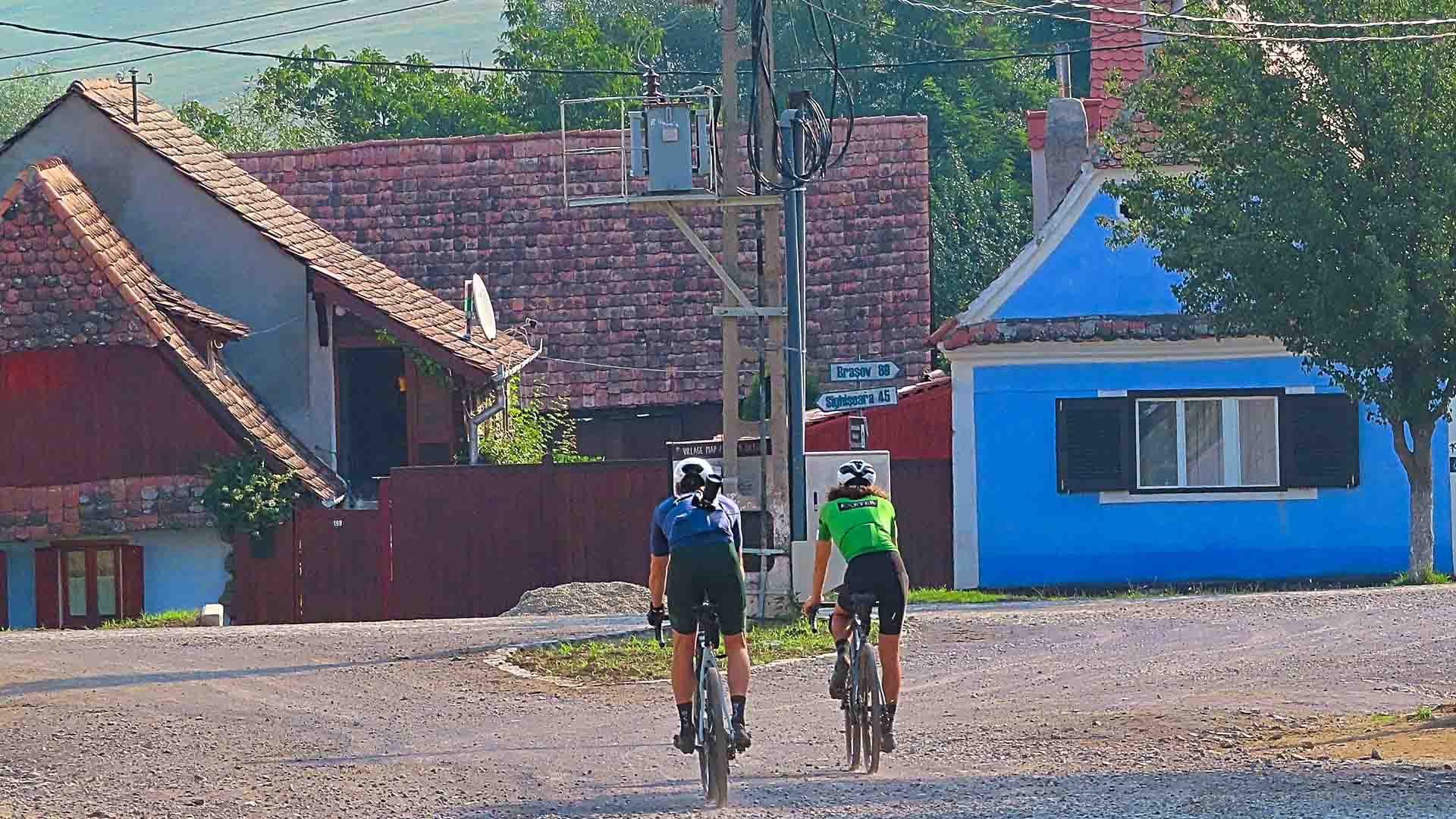


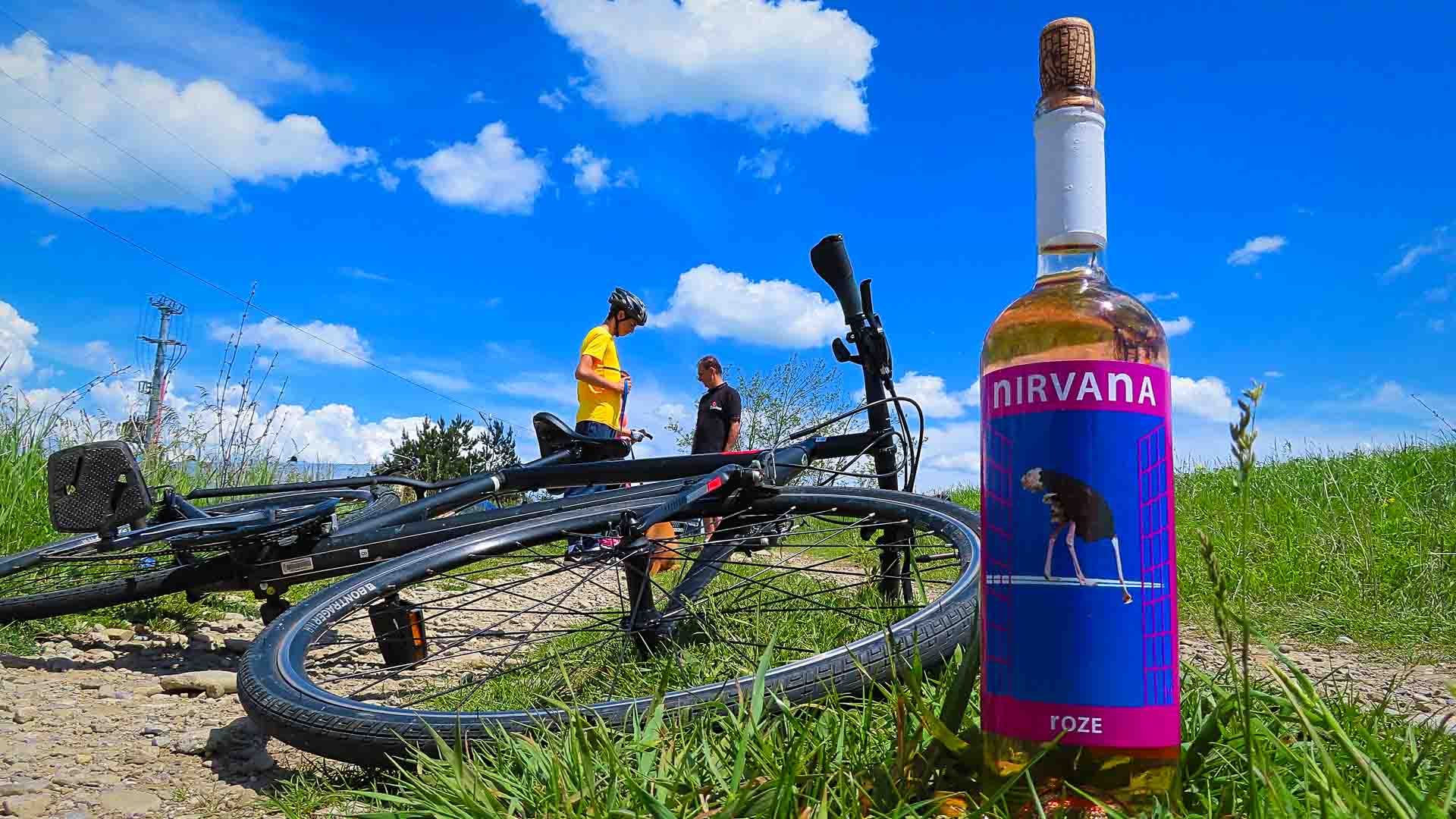
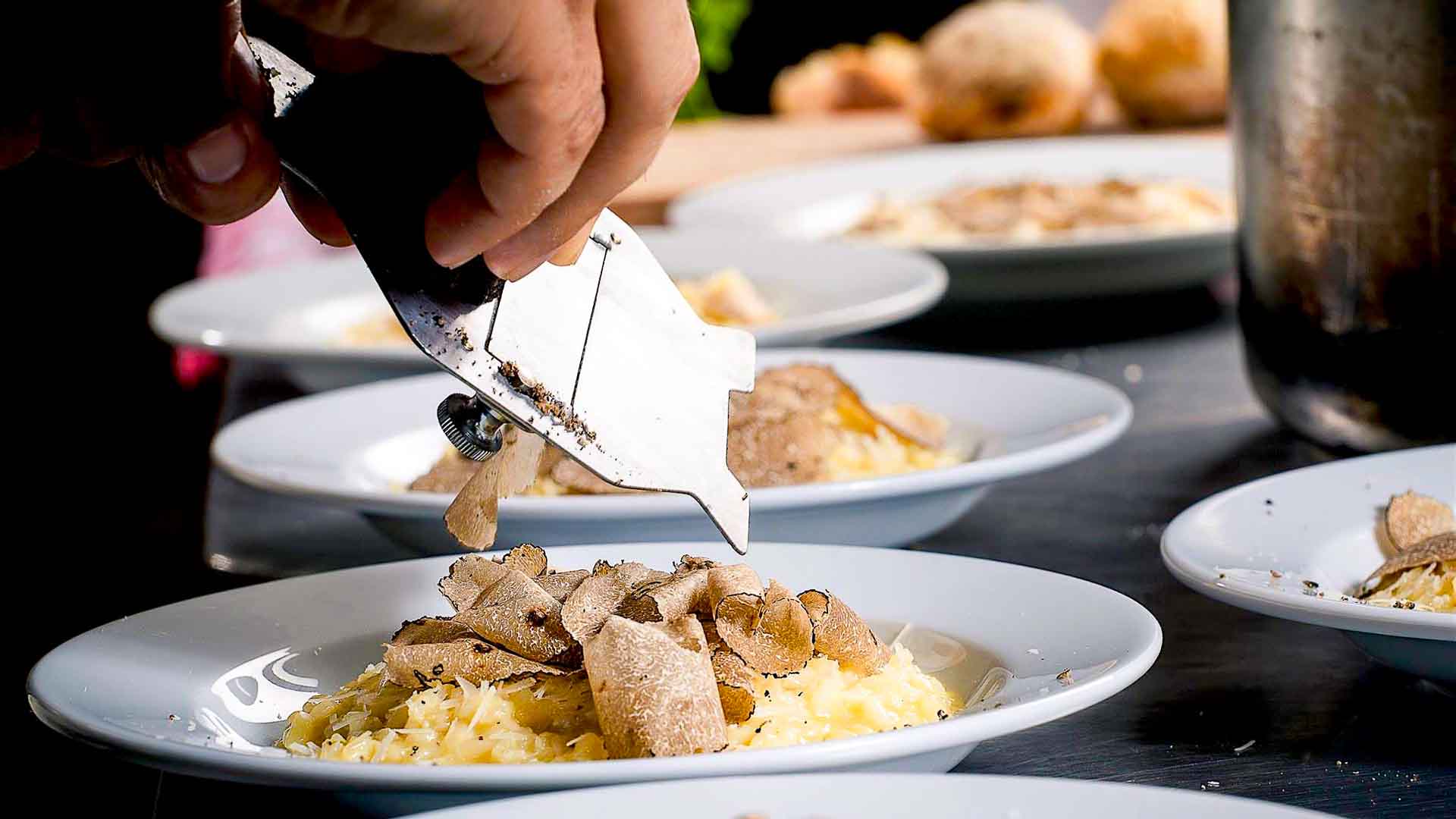




Myself and a friend did a bike/hike tour with Ionut and Bike in Time in July 2024. It was an awesome experience. Ionut is friendly, knowledgeable about all things Romanian and very helpful organizing a trip where I rode each day and my buddy hiked. The organization was seamless. Both the Transfagarasan and the TransAlpina are beautiful climbs. Ionut handled everything from airport pickup in Bucharest, walking tour of the city, transfers, biking support, to wonderful hotels. I give Ionut 10 out of 10 for a perfect introduction to Romania.
Wow, what a lovely review, thanks so much for sharing this!